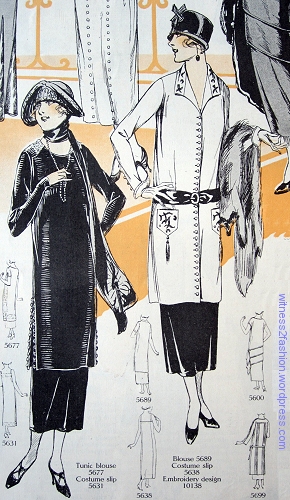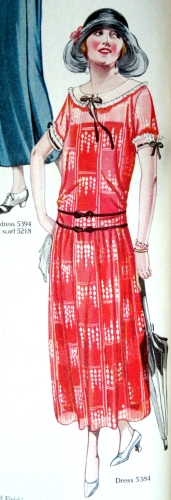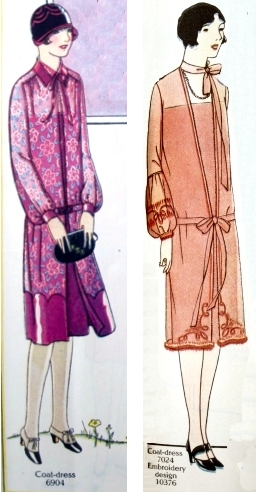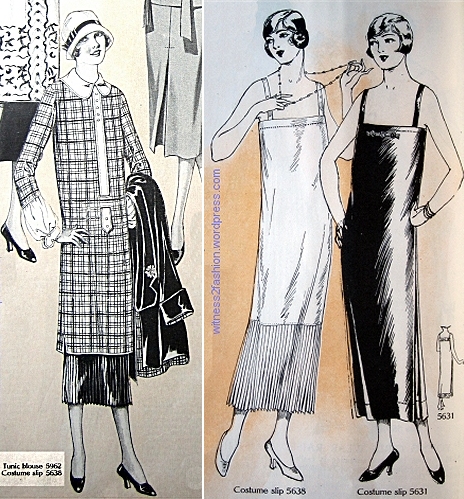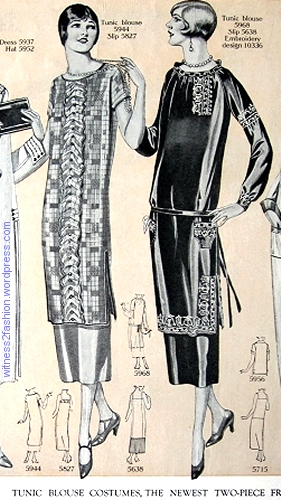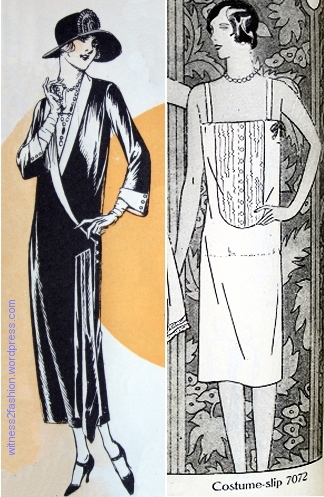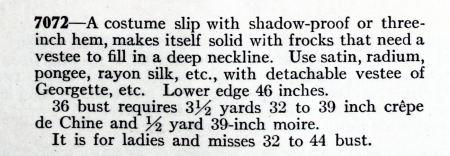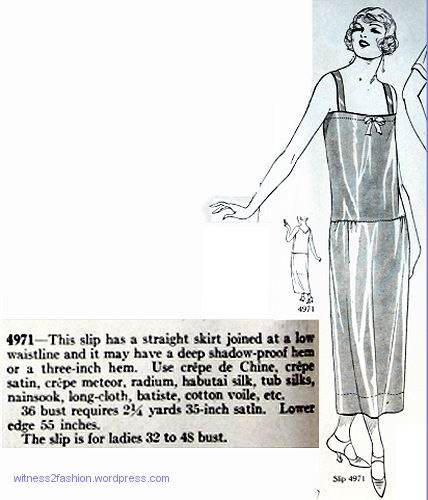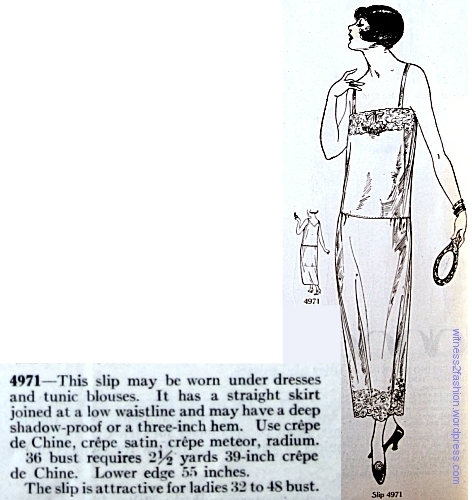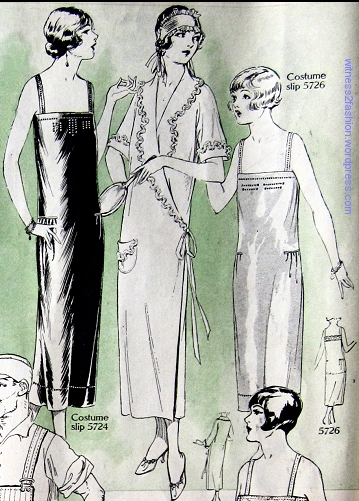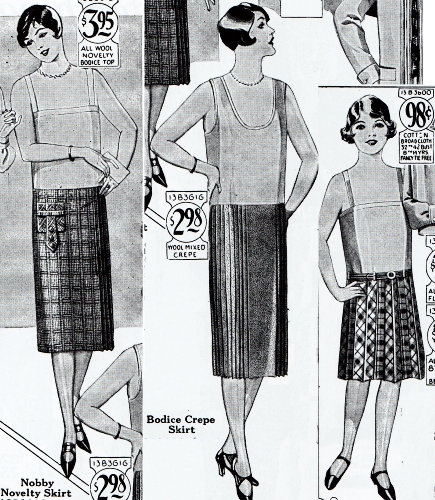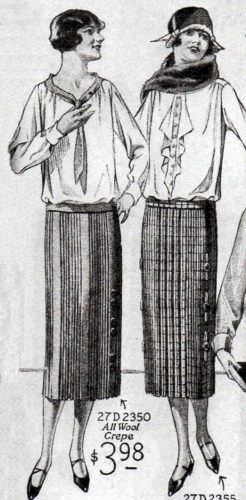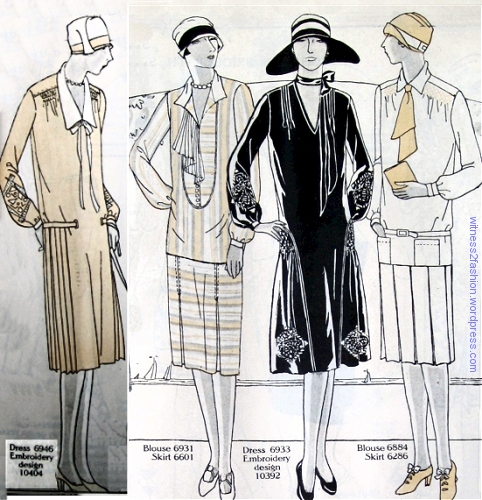In the 1930s, as less of the leg became visible, sheer stockings were the dominant fashion. This issue of Ladies’ Home Journal from October, 1936, contained much fashion advice about wardrobe planning. Women were advised to select their winter coat first, and then to think about shoes.
“This year, . . . instead of just being a good supporting cast, they are stepping right out to the front of the stage and becoming principals. It happens this year, because shoes are usually made of contrasting colors, or at least contrasting leathers that take different lights. One of the colors in your shoes may match your coat. The other may set the color scheme for your dress — your other accessories — your hat. The only exception is all black suede . . . .
“Shoes mostly creep higher and higher up in the instep. If there are straps, there may be several quite close together, or one placed quite low over the arch — you find few wide-open spaces.
“After your shoe selection should come your dresses.” — “Now It’s Time to Get Your Wardrobe Together,” by Julia Coburn, Ladies’ Home Journal, p. 29, Oct. 1936.
The article “Stockings and Shoes Have New Color Harmony” appeared in the same issue. These shoe and stocking combinations appeared at the top of the page . . .
. . . and these appeared at the bottom, with descriptive text in the middle.
Starting from top left:
“On the left above, worn with a coat of black rough wool, is a monk type shoe of black and cinnamon brown reverse calf, the stocking matching the brown and completing the contrast. Just behind is a splendid simple oxford of brown suede, trimmed with reddish brown calf, the exact color of the hairy tweed of the suit. The same color is chosen for the stockings.”
“The grand dark blue-green that is so smart this fall somehow suggests combination with brown. So, for a brown wool suit, we selected the green service calf high-in-front shoe, with buttons and trimming of alligator calf. The stockings are a deep reddish brown, just a shade lighter. With the wine-colored skirt we show a monk shoe with a slightly higher heel, in a fairly dark gray reverse calf, with gun-metal calf. The stocking is a pinkish gray which takes on an even warmer tone over the skin. The three-strap oxford in tan calf, [far right] with stockings in a lighter tan shade, is suggested for a coat of green curly-surfaced wool. Can you see what a difference the right shades of shoes and stockings make?” [I’m having a hard time figuring out why the three-strap shoe is called an “oxford.”]
“Attending a tea party below are some shoes for afternoon silks and dressier suits.” Starting from the left:

Wine Gabardine Pump, Black High-in-front Eyelet tie shoe, Black Suede and Patent Two-Strap. Afternoon shoes, LHJ, Oct. 1936.
[Left:] “A wine gabardine pump, trimmed with kid, is worn with a matching crepe dress. The little whirligig ornament can be turned to tighten or loosen the instep. The gray stockings have enough pink to harmonize with the shoes. [Center:] With a black rough crepe dress, next, we suggest a high-in-front one eyelet tie, piped in silver. A warm, bright, tan stocking for contrast. [Right:] The black-suede-and-patent two-strap might go with a fuschia-red crepe dress, in which case it might have gun-metal gray stockings, very sheer.” [This is the darkest stocking mentioned in this 1936 article. Women with thick ankles and calves generally look best in stockings matched to their shoes, but the strong matches of the 1920’s seem to be a thing of the past.]
[Far Left:] “The brown step-in pump, worn with a soft green dress . . . is calf combined with suede, gored to fit high over the arch. The stocking is a lighter brown, still on the reddish cast. [Center:] Dress shoes in darkest gray are very nice. We show them with a royal-blue dress, and gray stockings a little lighter and a little pinker. [Right:] The one-eyelet tongue ties at the right hand corner, worn with a red-brown dress, show the combination of red-brown suede with brown kid.”
“From hemline to heels, you have a chance to show the utmost discrimination in your use of color harmonies and color contrasts.”
Stockings came with either pointed or rectangular heels, as in the nineteen twenties.
Enna Jettticks Ad, October 1936
This full color advertisement for Enna Jetticks (not a real person’s name, but “energetic” — a little branding joke) shows some shoes in gorgeous colors. It’s from the same copy of the Ladies’ Home Journal. The image of a chic young woman is a way of persuading women that Enna Jetticks are not “old lady shoes.“
“. . . Shoes so comfortable that they require no difficult breaking in. For Enna Jetticks, you know, are designed for ease in the first place, and then they are thoroughly-hand flexed by master craftsmen before you ever try them on.”
“Sizes 1 to 12 and widths AAAAA to EEE. $5 and $6. Slightly higher in Canada.”
One Dress, Three Shoe Options
In December, the Woman’s Home Companion showed three different accessory choices for one claret colored dress, made from Companion-Butterick pattern 7115.

Companion-Butterick pattern 7115, December 1936. In claret colored silk, perfect for “holiday festivities.”
Black suede is shown on the model, but gray or dark brown shoes, bags, and gloves will provide “variety.”
Both the Ladies’ Home Journal and the Woman’s Home Companion agreed that, with a wine-colored dress, black suede or dark gray shoes were appropriate.
For examples and illustrations of shoe styles such as “monk,” “sandal,” and “oxford” in the 1930’s, click here. Then scroll down for a vintage article defining styles.














